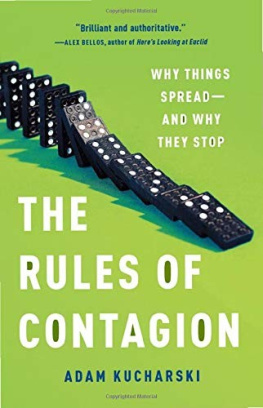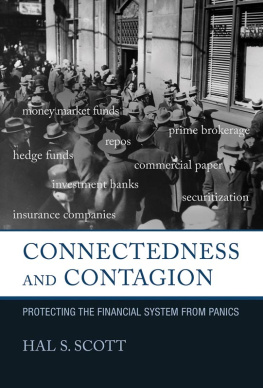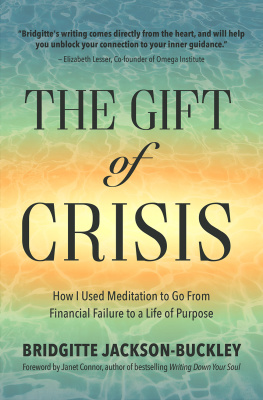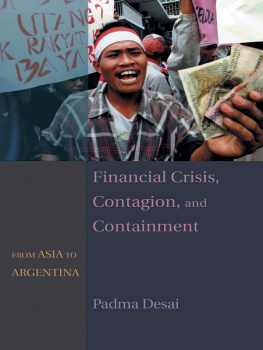First published 1999 by Westview Press
Published 2018 by Routledge
711 Third Avenue, New York, NY 10017, USA
2 Park Square, Milton Park, Abingdon, Oxon OX14 4RN
Routledge is an imprint of the Taylor & Francis Group, an informa business
Copyright 1999 by Taylor & Francis
All rights reserved. No part of this book may be reprinted or reproduced or utilised in any form or by any electronic, mechanical, or other means, now known or hereafter invented, including photocopying and recording, or in any information storage or retrieval system, without permission in writing from the publishers.
Notice:
Product or corporate names may be trademarks or registered trademarks, and are used only for identification and explanation without intent to infringe.
A CIP catalog record for this book is available from the Library of Congress.
ISBN 13: 978-0-8133-9035-2 (pbk)
ISBN 13: 978-0-8133-9033-8 (hbk)
For me, this book is the tale of two rivers: New River in Fort Lauderdale, Florida, in the 1950s and the Chao Phraya in Bangkok in the mid-1990s. On January 8, 1994, I had spent the day exploring the ruins of Ayuthaya, the former capital city of Thailand fifty miles north of modern Bangkok. I was returning to bustling Bangkok by air conditioned boat along the Chao Phraya on that sunny Saturday, when I first sensed the advent of what would become known as the Asian financial collapse of 1997-1998.
I had grown up in Fort Lauderdale in the mid-1950s. At that time, white stone bridges were still connected to vacant residential plots that had become mangrove swamps again after the collapse of the real estate boom of the 1920s. The white bridges along the canals of "the Venice of America" were monuments to the real estate developers who had gone bust because they had planned luxurious residential developments for a marketplace that would not catch up with their dreams for another thirty years.
Two things impressed me during that afternoon boat trip between Ayuthaya and Bangkok in 1994. The first was the degree to which the urban sprawl of Bangkok had expanded far beyond the city I had known when I lived in Thailand during the late 1970s. In "the Venice of the Orient," canals had been paved over to accommodate ever-expanding vehicular traffic in the capital city of the world's most rapidly growing economy. Bangkok was growing rapidly upward, as well as outward, in an exploding urban sprawl. Second, during the leisurely trip down the river, I spied several new, luxuriousand thoroughly emptythirty-story apartment buildings that had been built on the assumption that large numbers of wealthy buyers would rapidly be produced by the ever-increasing Thai prosperity. Thus, my first inkling of the coming collapse of Asian assets came from mingling the images of empty Bangkok buildings in the 1990s with memories of equally bold real estate developers of South Florida who had so woefully misjudged the marketplace of the 1920s.
On a subsequent trip to Bangkok, inkling became hypothesis. In the company of business colleague Rod Porter, I returned to Bangkok in September 1994. Representing a New York foreign exchange firm, we were attempting to interest Thai institutional investors and wealthy individuals in the firm's foreign exchange risk management services. The businessmen with whom we spoke were polite but non-committal. After all, the value of the baht would "never" change; hence, there was little risk to be reduced. My colleague's morning jog that Sunday morning passed numerous construction sites. Later, he hypothesized with me that there was no way the Bangkok market could absorb all of the modern offices and luxury condominiums being opened or under construction. To test our hypothesis, after returning to the United States we obtained basic data on current office space, the amount of new space coming on-line, and the vacancy and absorption rates. From these data we concluded that even at 8.5% per annum growth rates, Bangkok was on the verge of a real estate crisis that would have a substantial negative impact on the banking system. In a January 1995 letter, conveyed indirectly and informally to the highest levels of the Bank of Thailand, we predicted a crisis similar to the American Savings & Loan debacle of the late 1980s. We warned of a negative impact on the banks similar to the aftermath of the collapse of the bubble economy in Tokyo.
During 1995-1996, an informal collaborative group formed to devise plans for achieving a "soft landing" for Thailand. Pornpimol Kanchanalak, Tom Kendall, Tadashi Maeda, John Merante, Rod Porter, John R. Taylor, and a number of exceptionally astute Thai friends contributed their time, pro bono, to this effort. With each plan (dutifully passed along to Thai authorities), we learned more about the depth and breadth of the crisis. It became clear that the glutted real estate market accounted for only a third of the non-performing loans threatening the banking system. Non-performing loans also had appeared throughout the modern manufacturing sector.
A further trip led me into a series of interviews with bankers and several Thai financial analysts. Most of the individuals admitted there was a non-performing loan problem, but they claimed it was not serious and that only one bank, the Bangkok Bank of Commerce, was in deep trouble. Only one person suggested the problem was large, involving the property companies, the finance companies, and ultimately the banks. The officials with whom I shared my findings did not take offense but gently indicated the problems would be handled "the Thai way," behind the scenes, through compromises among builders, bankers, and regulators, thereby precluding both slow growth and financial panic.
Repeated trips to Bangkok clarified the political fact of life that for each proposal there was always another special interest group standing in the way of rational policy choices. Sophisticated technocrats, with advanced degrees from the most prestigious universities in the United States and Western Europe, remained solidly embedded in their own business culture. They proved unable to begin unraveling "the Thai way," by which personal relationships supplied the only real collateral for business loans. Long before the baht crashed, business began to sour. Poor business decisions became non-performing loans and, in the absence of a binding foreclosure law, the financial sector could not clear its books.
Thailand had also become a democracy, and the political will required for tough decisions could only be assembled, it seemed, once the failure of the entire system had become evident to the whole world. Action could not be taken until the threat was obvious to all, and by that point a "soft landing" was no longer a real option. Particularly in 1995 and 1996, the interests of property owners did not coincide with the interests of the finance companies, which in turn differed in important ways from those of the banks. Rather than reigning in a runaway boom, those responsible for regulating the system instead sought to be responsive by keeping the boom going.









